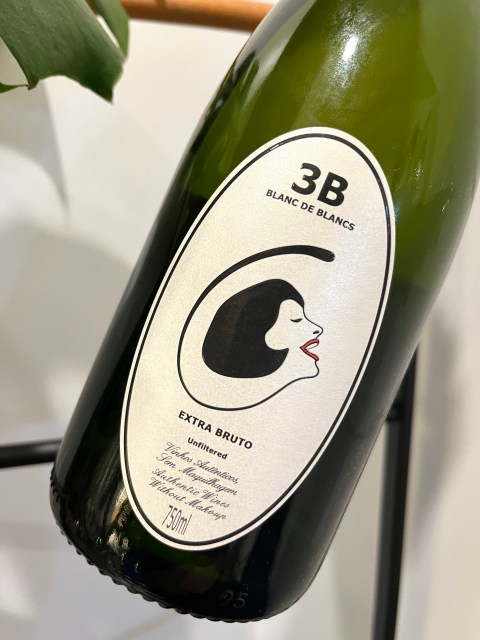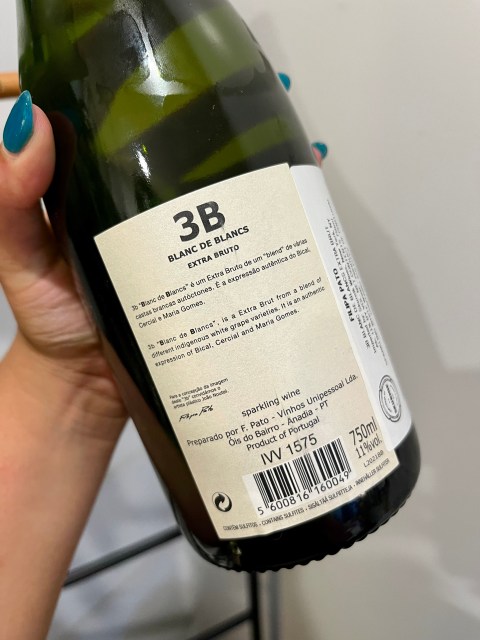feature image photo by VICUSCHKA via Getty Images
We’re back, babes! It’s another edition of Uncommon Pairings, a series all about wine. Peruse the archives here for some more drippy, boozy content.
Labels are tough, both the ones we’re given and the ones we give ourselves! But that’s because we’re complex beings, and labels can’t even begin to describe who we really are. In the wine world, labels are easier. Wine labels give you some insight into what the stuff inside the bottle might taste like and whether you’ll even like it at all. If you’ve ever been stuck trying to figure out what “AOC” means on a wine bottle — not that AOC, sorry — or whether Sancerre is really worth the price tag, I’ve got you.
I’m currently working my way through a bottle of sparkling! Here are the front and back for reference:

Vintage
Sometimes, wine will have a year on it! The year is the vintage, or the year in which the grapes that make up the wine were harvested. The whole wine production cycle can span several years, but grape growing seasons are less than a year, so it’s easier to just refer to when the grapes were harvested. This comes particularly in handy because grapes reflect the climate they were grown in. Remember 2020? There were a bunch of wildfires in California, and several wineries were impacted. The ones that did have grapes survive were worried the wines made with that year’s harvest would taste smoky (smoke taint is the official term).
Vintages are useful, but unless you have the encyclopedic knowledge of every region’s climate per year, or the patience to Google, you’re probably fine to ignore the vintage, especially with larger producers. If your local wine store stocks the wine, chances are enough people believed in the wine to get it on the shelves. If you have the extra patience, you can also check out vintage charts! They’ll tell you which years in a particular region exhibited exceptional growing conditions and yielded Good Grapes.
Also, sometimes wine doesn’t have a vintage! The bottle I’m drinking right now doesn’t! Sometimes this’ll be clearly marked on a bottle with “NV” (Non-Vintage) but other times, it’ll just be omitted entirely. Lack of vintage isn’t a bad thing; it just means that wines from different harvests were blended together.
ABV
Wine ABV can vary, anywhere from 5-6% all the way to 20% or more. Fortified wines like Madeira or Port are on the heavier end of the spectrum. Most clock in around 11-14%, and you’ll be able to see this clearly marked on the bottle. On the back of the label of what I’m drinking, it says “11% vol,” so it’s on the lower end of average. I usually prefer lower-ABV wines during daytime hours or anytime I want something that’s an easy sipper. IMO the higher-ABV stuff works well for candlelit dinners and nighttime flirting, but that’s just me!!
The Producer
The producer is who makes the wine! If a producer isn’t listed on the bottle, you can usually find out who’s behind the wine by Googling the name (like how André is an E&J Gallo Winery creation).
I’m drinking something made by F. Pato — and on the side of the back label, it says “Filipa Pato.” She’s a former chemical engineer turned winemaker who makes wines from indigenous grapes with her husband. I picked this up because the last name sounded familiar to me, and after some light nternet sleuthing, I think I have figured it out. Maria Pato makes the (very good) Duckman wines with her father, a father who interestingly has the same name as Filipa Pato’s father, which would make the two… sisters, I think, if my math is right! Wine! A family business!
Where It’s From
Have you ever picked up a bottle of wine and noticed that the label says something like “Denominazione di origine controllata” or “Appellation d’origine controlée”? It just means that the wine is from a protected or controlled region and that its production followed very specific rules (including how much of each grape variety can be in it, the alcohol content, and more). The rules vary based on the country and type of wine, but they’re strict.
You might’ve heard that Sancerre is, like, the ideal white wine. Sancerre is just 100% Sauvignon Blanc with good marketing (and because of AOP rules, really specific production standards). But if you know you like Sancerre, and you don’t love the price tag associated with Sancerre, just pick up a Sauv Blanc from elsewhere in France! Or New Zealand! It might not taste exactly like Sancerre, but it’ll be close.
Other times, wine won’t be from a protected or controlled region. And that’s totally fine! I feel like a lot of protected and controlled regions are in the “Old World” (Europe), and because of the strict rules, there isn’t as much invention and play. If you’re looking for something funkier or different or made with local grape varieties or minimal intervention, you might want to look outside of the “famous” wine regions. It’ll still be just as good!
What (Grapes) It’s Made Of
If the wine isn’t from a controlled region, the label will (usually) list out the grapes that are in the bottle. I’m drinking a blend of Bical, Cercial, and Maria Gomes — three grapes I had no idea existed until I opened this bottle! If the grapes listed are new to you, I do recommend looking them up to figure out what flavors are typically present in the wines they comprise.
And honestly, that’s it! I suppose a sixth thing to consider is how cute the label is (always get the cute bottle!!) but ultimately that has no bearing on the wine itself — sad but true. Anyway, let me know what you’re drinking in the comments!! And if you want a custom wine pairing, let me know!!




Loving this series! Would love to see a quick guide on how to pick a wine from the grocery store, maybe top things to look for to get bang for your buck if you’re looking at cheaper to mid tier wine? I’ve seen longer guides on what to look for, but ideally I’m not spending more than a minute looking at each bottle and googling a ton of stuff while I’m also getting groceries. Is there a short list of distributors or importers (or whatever they’re called) I can memorize and look for when I’m shopping? Other tips and tricks Thanks for all this info!
Bless. I didn’t have much understanding of wine differences prior to finding one grape varietal that I was obsessed with, and this was super helpful to continue my education 🍷